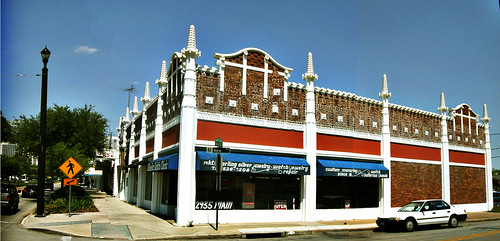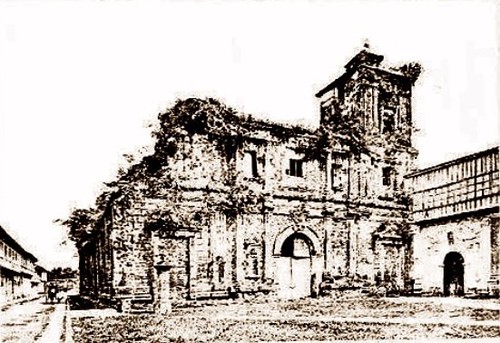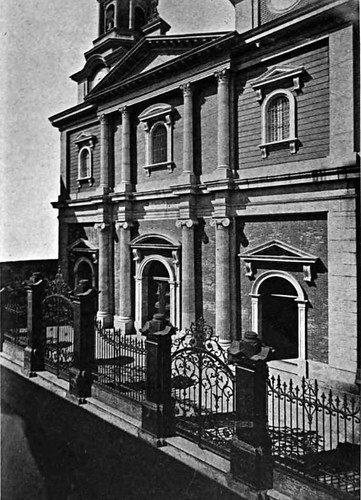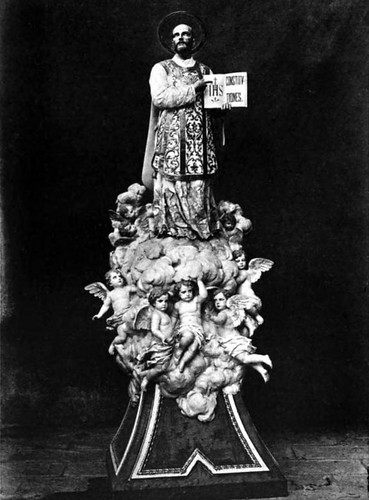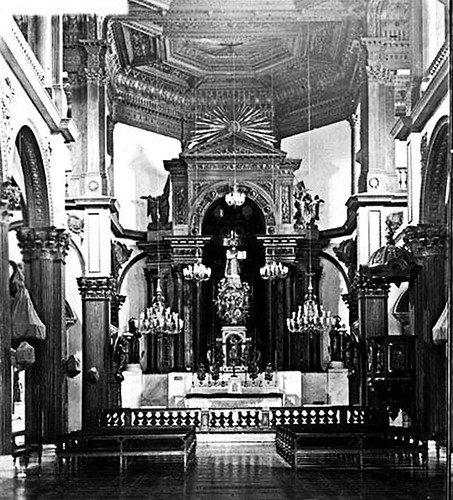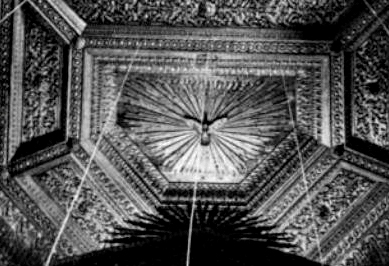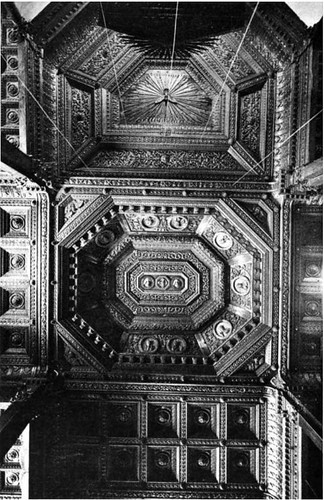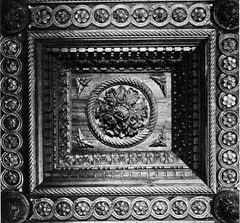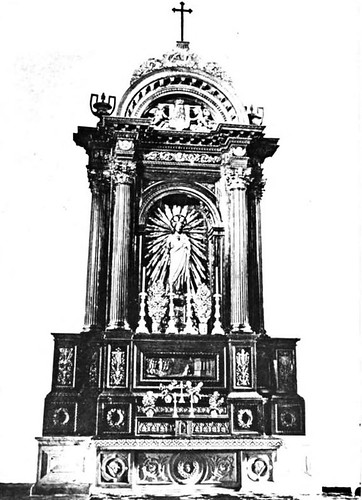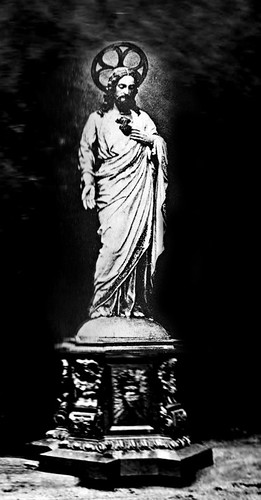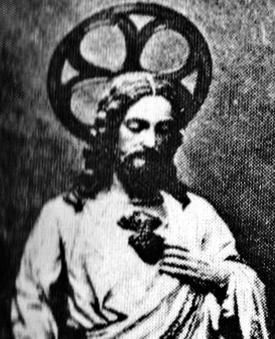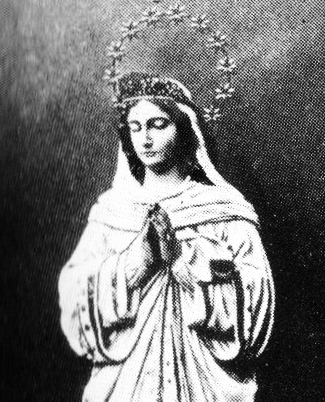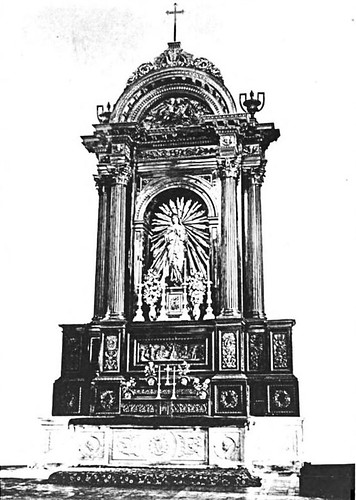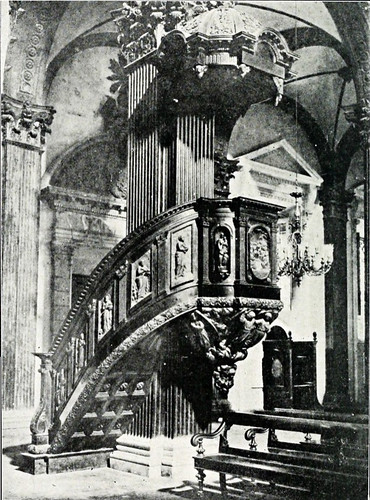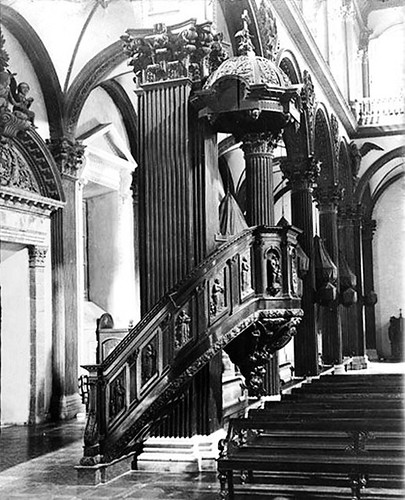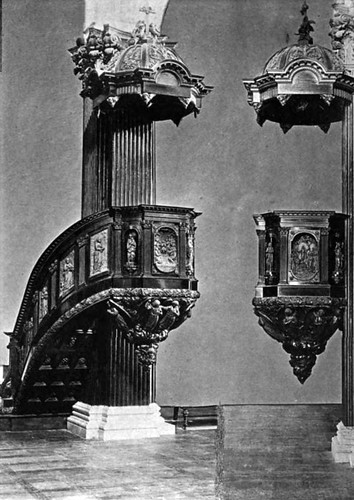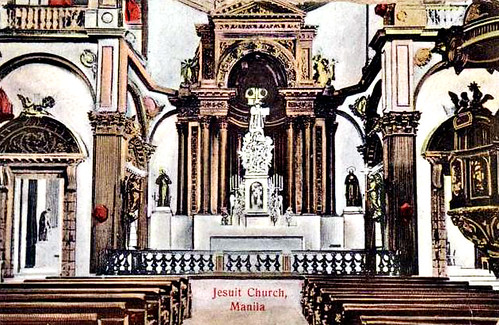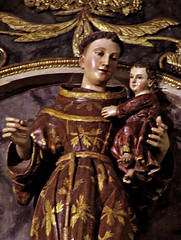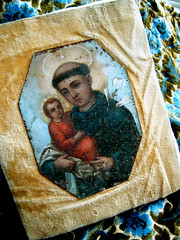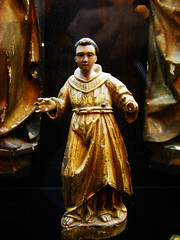
Santo Nino de Atocha, Holy Christ Child of Atocha.
From the collection of Bob Riddick.
So, an exhibit on retablos hosted by the Heritage Society at the Sam Houston Park, downtown, is a pleasant surprise indeed.
Retablos: Art for the Masses is an exhibition featuring Mexican retablos, nichos and a handful of bultos or santos. It traces the retablos evolution from the costly paintings on copper created by trained and schooled artisans for the elite society, to the pedestrian laminas, rendered on tin metal by anonymous and self-taught "saint makers" or santeros. It also explores the retablos' Houstonian connection by reminding visitors that the city was once part of Mexico.
It is a small show with perhaps no more than 50 pieces. Most of the featured artworks come from the collection of Bob Riddick- also the show's curator, and the rest of the pieces from other collectors.
The exhibit is presented in a very straightforward manner. Each artwork is by itself, in all its glory-save for a small label identifying the subject and from whose collection the piece is from.
The lack of complimentary texts that explain the showcased objects and their subjects, is rather disappointing for the non-Catholic viewer who has no inkling what it is all about. This is rather unfortunate because there is an interesting story behind each saint.
Fortunately for me who was educated by nuns in a Catholic school, the stories of the lives of saints remain vividly alive in my imagination.
Most notable from the retablos is a simple, Mexican lamina showing a penitent San Nicolas de Tolentino. Here, San Nicolas is shown about to flog himself with a whip and his rotund and plump face (bearing features reminiscent of Hispano-Filipino ivory pieces) registers no concern for the torture about to be inflicted on him. His whole attention is focused on a crucifix he is holding. The graphic quality of the work is flat and comic-like, which in a way is very appealing. Different hues of blue, brown, and red complement the simple and childlike rendering of the saint.
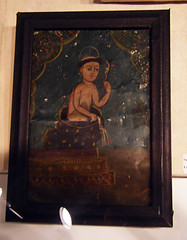
San Nicolas de Tolentino.
Collection of Bob Riddick.
Another remarkable piece from the show is a retablo housed in its tin metal nicho. The nicho simulates a classical church altar with its pediment, nimbus and finials in the shape of an urn and comes complete with a miniature glass chandelier. Inside, is a depiction of Ecce Homo, "Behold the Man" - an appellation used to describe images of the bound Christ when Pilate presented Christ to the people.
Also in the exhibit are a handful of bultos of santos.
Most impressive in this group are the figures of Santiago and a wooden Santo Domingo. The wooden icon labeled as Santo Domingo, is actually a Santo Tomas de Aquino or Saint Thomas Aquinas. Saint Thomas is also a Dominican saint but he is often depicted clean shaven, just like in this sculpture. Santo Domingo, the founder of the Dominican order, on the other hand, is always depicted with a short beard and mustache.
This santo, though unlabeled with a provenance, is most probably from the Philippines. Judging from its base, facial features and overall carving style, it is probably a Filipino santo, sculpted sometime in the 1700s.

Santiago.
Collection of Bob Riddick.
In the sculptural group of Santiago, the apostle is shown brandishing a sword, atop a white horse, and about to trample a supine, fear-stricken Moor. This is a representation of St. James as Santiago Matamoros, James the Moor-killer.
In the days of Reconquista, when Spanish Catholics were fighting for control of their homeland against the Moors, a miracle occurred.
In a glorious apparition, the Spaniards saw Santiago riding on a white steed, fighting off the Moros with his sword. From this episode, James the Apostle became James the Moor-slayer, the protector and patron of Spain. Santiago's popularity in Spain and her colonies are evident in the many places and churches that bear his name.
As gruesome as the sculptural group's subject is, Santiago is ironically, delicately rendered. The santero endowed the saint with soft features: pale skin, an oval face, a small mouth-ajar, baring tiny teeth, flushed cheeks and painstakingly drawn eyelashes and eyebrows with every single strand of hair rendered with a single stroke of the brush.
A silver, wide brimmed, traveler's hat crowns his handsome head symbolizing the fact that Santiago, is also the patron saint of pilgrims. In fact his shrine in Compostela, Spain has been an important pilgrimage site from all over Europe, since time immemorial.
Retablos is an utter delight to the eyes and to the soul. Aesthetically and spiritually, it is an enchanting exhibit for everyone to see. Retablos runs from May the 5th to July 12.
For more information regarding the show, please vist:
The Heritage Society.
Images from the Heritage Society website. Text, Victor Ancheta

